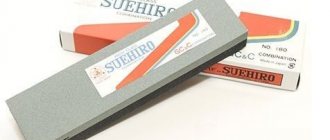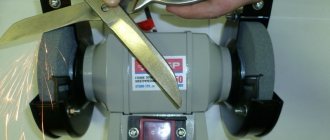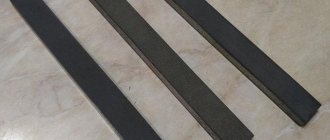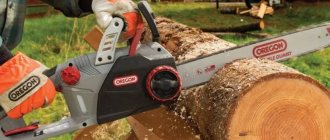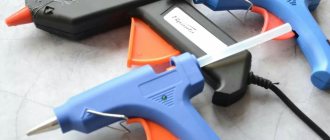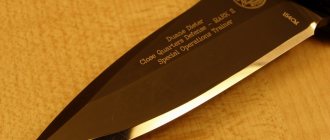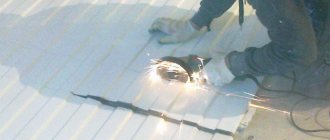Meet a new article from Arsenal Masters RU specialists. All about sharpening stones. Classification, types of stones. Recommendations and advice on the selection, storage and alignment of stones, and the process of sharpening tools.
There are many sharpening stones, it’s difficult to choose, and there are also many nuances and features. We have collected information on them and added tips and recommendations. We are waiting for your feedback, share your experience!
Classification of sharpening stones
There are synthetic and natural stones.
- Synthetic stones are divided according to the type of material into water, ceramic and diamond.
- Natural stones work with water or oil.
The wide selection of stones is also due to the different grain sizes of abrasive stones. This allows you to remove chips, remove minor damage, and bring the sharpened surface to “zero.” In practice, water stones are more often used.
The popularity of manual sharpening is easily explained:
- The hardness and edge of the steel does not deteriorate because no heat is generated.
- A huge selection of grain sizes allows for any fine sharpening.
- Precise cutting geometry (no rounded chamfer surfaces such as felt or rubber discs).
- No expensive equipment needed.
- In their practice, Masters reach perfection!
How to Make Dull Blades Sharp: Dull blades have a rounded edge on the cutting edge, therefore, when sharpening, it is necessary to remove material from the chamfer surfaces to again achieve the perfect “intersection” of the 2 planes of the blade chamfer.
Chainsaw Chain Sharpening Wheel
Content
Electrical equipment, light, lighting
All owners of chain saws are faced with the need to sharpen the chain. This problem can best be solved by two methods - take the chain to a workshop, or sharpen the chainsaw chain yourself. With the first decision, what remains to be done is clear to our client, but when contacting a service center it is impossible - for example, the chain became dull while working in the country, from hundreds of kilometers to the nearest workshop. Under such circumstances, you will have to cope on your own. Let's talk about how to properly sharpen a chain saw.
Table of contents:
The need to sharpen the saw
The procedure for sharpening a chainsaw chain. no more difficult than the process of sharpening any cutting tool in the presence of special devices. The chainsaw tooth has a complex geometry. The side, not the top, cutting edges, the next point where they are beveled towards the line of movement of the chain at a certain angle, make this operation difficult.
To a large extent, the high performance of a chainsaw is influenced by the correct use of its chain, which must be sharp and not pre-sharpened. This is the only way to ensure effective and safe operation when using it. After all, a properly sharpened chainsaw chain is more important than a powerful engine. Sharpening the saw must be done after it has become dull, which involves working slowly, and the machine also moves to the sides.
Intense operation of the chainsaw provokes rapid dulling of the chain. During the day, several sharpenings may be required. The problem is aggravated by the fact that initially, the teeth quickly become dull when they meet the ground. When you hit the soil with the tire once or twice, you can stop working. The chips will become small and the saw will stop going deeper into the wood. The more dull teeth take 30 years to sharpen, the less material needs to be removed when sharpening; naturally, the useful service life of the saw chain becomes longer.
When do you need to sharpen your saw?
Sometimes, sharpening a chainsaw chain is often carried out untimely - users simply do not notice the signs that indicate that the chain has become dull. It is not recommended to saw with a defective saw, or with a dull chain, which results in poor cutting results, high cyclic load, high fuel consumption, and destruction of the drive sprocket and tires. This again leads to a decrease in productivity, increased wear of all components of the chainsaw and a decrease in the useful life of the chainsaw.
To avoid such problems, be careful when working with the type of chips. Discs for sharpening chains. A unit with an installed disc for sharpening chainsaw chains. Based on the condition of the chips, you can determine when the chain needs to be sharpened. If the oil becomes darker after about 30 years, this is a clear sign that the chain requires sharpening. You can easily recognize a dull chain if only small chips fly out of the cut instead of large thick ones. There is a lot of dust in the shavings, not like oil looking like needles.
It is enough to simply determine the moment when sharpening is necessary. An important feature is the feed force. A target, sharpened correctly, is drawn into the cut even with small pressures. If, on the contrary, the chainsaw is forced to cut by increasing the feed force, then the teeth become dull. Take a close look at the teeth of the chain - dullness should often be noted with the naked eye. Chain sharpening machine caliber EZS-220 00000035890 priced from RUB 1,709. In the online store Vseinstruments.Ru: description, characteristics, equipment, photos, reviews. sharpening machine
sharpening disc.
You can easily determine the need to sharpen the chainsaw of a Stihl chainsaw
READ What shape does the cutting part of any saw have?
Teeth parameters
The cutting link of a chain saw consists of: a tooth blade, a base of a link and a depth limiter. The clove blade has an end blade, which is located vertically, and a non-falling upper blade, located horizontally.
To achieve optimal cutting properties, it is necessary to give the tooth blades certain angles. The back of the tooth, which slopes back at an angle, forms the angle of the upper blade that is required for the upper blade to cut into the wood. The blade of the tooth, which tapers back, forms the angle of the end blade necessary for side cutting of chips flying from under the chainsaw.
The edge of the end blade with the sliding surface of the link forms a rake angle, which varies among different chains from sixty to eighty-five degrees. Standard diamond wheel for emery, how to choose the right machine for sharpening chains. The backward tilt of the upper blade is measured in accordance with the sliding plane of the link, regardless of the type of saw chain, and does not reach fifty to sixty degrees. Top blade. the main blade, and the angle of the top blade is the most important angle. The angle of the upper blade is not easy to measure; its correct value is provided to you if all the values indicated above are observed.
It will not be difficult to change the sharpening angle of the chainsaw chain depending on the application. The main rule: the simpler the sharpening angle, the higher the cutting performance when cutting soft, unfrozen wood. When cutting hard, unfrozen wood, reducing the sharpening angle helps reduce vibration and the smooth running of the saw. If the sharpening angle does not have to be not just thirty-five degrees, not less than twenty-five degrees. Sharpening wheel in Ukraine. The exception is chains intended for longitudinal cutting. This angle is 10°.
The angle of the upper blade, the sharpening angle and the rake angle change when sharpening. Such criteria have a decisive influence on the cutting ability of the chain. There is a depth limiter on each link in front of the tooth blade. The difference in height between the edge of the back of the tooth and the edge of the depth stop is defined as the depth stop distance.
The level of cutting into the wood of the upper blade (chip thickness) depends on this indicator, therefore affecting productivity. Set the distance of the depth limiter depending on the type of design and chain pitch. It should be normally 0.5-0.8 millimeters, most often 0.6 millimeters.
Sharpening chains. Abrasive wheel (plate).
Circle
grinding.
Disc-shaped flat. Type twelve for sharpening
high-speed steel tools. D/150. H/32. W/8.
High values cause the chainsaw to be more prone to kickback, chain vibration and not too much grip. Low values cause a drop in performance. Since with each sharpening of the chainsaw the distance of the depth stop decreases due to the reduction of the upper edge of the tooth, the depth stop also requires periodic filing. after ten sharpenings.
General sharpening rules
Proper sharpening of a chainsaw chain requires following several recommendations. It is highly recommended that you pay attention to them before sharpening your chain. The sharpness of the angle of the cutting link and the height of the cut stop must comply with the criteria established by the manufacturers. Today, it is important that the dimensions of all links of one chain be identical. Otherwise, performance may decrease, and the level of vibration and the load on the engine may increase. Due to uneven loads, the likelihood of chain breaking increases.
Since the internal contour of the tooth is close in shape to a circle, and the material of the chain is quite soft, it is customary to sharpen the chain with a round file, which has a small diameter. Sharpening a chainsaw requires precise positioning of the file relative to the tooth being sharpened.
The top edge of the file should extend above the top edge of the tooth by approximately 1/5 of the file diameter. Chainsaws; rezer hsb 303 manual chain sharpening machine for rezer hsb 303 chain sharpening can. Before sharpening the chain of a gas-powered saw, it is recommended to find out its parameters; it is recommended to choose the diameter of the file depending on the pitch of the chain. It usually fluctuates in the range of 4-5.5 millimeters.
READ STIHL chainsaw spark plug gap
The video of sharpening
a chainsaw chain
shows that the file must be positioned at a right angle in a vertical plane to the chain, not ten or thirty degrees. in horizontal. How to choose a sharpening machine for chainsaw chains. A good machine for sharpening chains. These conditions are fulfilled using only the file manual. is not possible, therefore, various devices are used to sharpen a chainsaw to ensure the required sharpening parameters. They are kits that come with gas-powered saws, as they are also called, and are purchased independently at every hardware store.
Sharpening accessories
A common set designed for sharpening the chain of a chainsaw consists of a round file, which is installed in a special holder, a flat file, which is necessary for grinding off the depth limiter, which provides the last operation of the template for sharpening the chainsaw chain, and not a special hook for cleaning the chainsaw from sawdust.
There are lines on the holder with a round file that allow it to be positioned correctly relative to the chain. The holder is installed on the tooth to be sharpened according to the orientation lines. In this case, the plate rests on the depth stop, not the upper edge of the tooth, and the file is placed under the cutting edge.
The use of a holder ensures that the file adheres to the tooth at the correct height. There are different holders for different chain pitches. Proper selection of a holder according to the correct file diameter ensures that the file will protrude 1/5 of its diameter above the back of the tooth. Only special files should be used.
Before manually sharpening a chainsaw chain, you must secure the bar. Select files according to the type of chain; the main selection criterion is then its pitch. Round files have a diameter of 3. Six millimeters are not intended for sharpening a cutting tooth. For flat files, the width ranges from 4.12 millimeters, they are used to remove the control tooth.
Carefully examine the following recommendations that help you sharpen the chain of a gas-powered saw correctly:
- sharpening should be done in such a way that 1/5 of the file for sharpening the chainsaw chain protrudes above the cutting edge;
- the tool must be moved not back and forth, but in one direction;
- Every 2-3 sharpening of the tooth, it is worth sharpening the cut stop.
Sharpening is carried out in this way:
- pre-install the chain brake by holding the chainsaw tightly between your knees;
- then place the template in such a way that the “arrows” point to the “nose” of the tire. A machine for sharpening chainsaw chains will help achieve this. Sharpening machines. T. Thermal. Remember to use chalk to mark the tooth where you started sharpening;
- move the file in the direction indicated by the arrows, do not sharpen with movements “from yourself”;
- using a flat file without an onlay, it is necessary to remove the control tooth. Then the direction of movement a is possible in any direction.
It should be noted that working with a kit for sharpening a chainsaw chain requires certain skills; it is precisely because of this mistake that it is not advisable to sharpen an expensive chain without experience.
Don’t try to press the file too hard, make measured, not smooth movements. Rotate the file regularly to avoid one-sided wear. In a similar way, sharpen the remaining teeth for our client. It is more convenient to sharpen the teeth of the textbook direction first, and then do the same with the teeth of the other direction, changing the position.
When sharpening, make the same number of strokes with the file on each tooth using the same pressure. This gives the teeth the same length. The length of all cutting teeth will be the same. Different lengths of teeth cause uneven movement of the chain and the formation of cracks here. For which the design with unequal tooth lengths is intended, it is necessary to file our client, which leaves the cutting teeth to the length of the shortest tooth.
READ How to Put a Chain on a Saw
Sharpening machines
Of course, not every chain can be sharpened with a file. If, during operation, the chainsaw thoroughly plowed gravel or sandy soil, or it was not sharpened for a long time, so that the cutting edge has completely lost its shape, sharpening with a file will require too much time and effort. Chain sharpening machines characteristics, reviews, review. Buy chain sharpening machines in the online store domisad.com.ua. Delivery by. In such cases, it is reasonable to use a chainsaw chain sharpening machine. Such machines are divided into electric ones, which are equipped with sharpening wheels, not manual devices.
The working part of such devices for sharpening a chainsaw chain is structurally reminiscent of a bow saw when a long round file is inserted instead of a saw blade. The machines sharpen and do not straighten the chains, adjusting the length of the upper edge of all teeth to the same size according to the smallest tooth, which is taken as the control one. A complex configuration mechanism will help us set the necessary parameters for our client.
Sharpening must be done in 2-3 movements, then moving on to the next tooth without leaving our client with the settings made for the control tooth. This, of course, ensures the same sharpening procedure parameters for absolutely all teeth. When you have to grind down the stopper, change the round file to a flat one.
Electric tool for sharpening chainsaw chain. simple not convenient during use. It is equipped with an adjustment system that helps set the chain at the required angle without precisely bringing the disc to the edge to be sharpened. There are machines that automatically clamp the vise when the disk is lowered onto the chain.
The machine, in fact, performs a similar role to that of non-gauge chainsaw chain sharpening wheels, alas, with higher accuracy. Sharpening is done like this:
- Loosen the screw a little at the beginning, which adjusts the chain clamp.
- Install the chain in the guide groove so that the links point towards the sharpening stone.
- Then set the desired sharpening angle. The standard value is an acute angle of 300, but other options are possible depending on the use of the chain. Choose the polarity based on the sharpening of the cutter. left-handed, in other words right-handed.
- Sharpen. There are two options. The first one is sequential sharpening, processing the cutters one after another, but at some point you will have to change the polarity. The other is to sharpen every second cutter: processing the left-handed ones first, and then the right-handed ones, or, as is more convenient for you. By reducing the number of operations, since there is no need to change the polarity every time, the speed of work increases.
When working, it is important to follow some rules. That's it, the optimal level of sharpening is determined by considering the length of the most blunt tooth, which serves as a guide. When sharpening, it is not advisable to do it too deeply, as this leads to a decrease in the strength of the link. After completing the work, it is recommended to blow out the chain with compressed air and not leave it in clean oil for a certain time.
Now you know that this is such a procedure as sharpening a chainsaw chain at home, not what is the price of sharpening a chainsaw chain. Machine for sharpening chainsaw chains: types and. The work is complex, has its own characteristics and nuances, requires minimal basic skills, but can be completely done at home. All that remains is to choose the main option for the development of events - using a file, or, in other words, a manual machine.
Source
Synthetic water stones
These are the most popular and productive abrasive stones. They have an open-pore microstructure with the inclusion of homogeneous particles; the abrasive grain is quickly crushed. Requires correction when worn.
Structure of synthetic abrasive stones Sharpening stones mainly consist of a binder (matrix) in which abrasive particles (alumina, carbides, natural semi-precious stones, diamond dust) are embedded.
The effectiveness of the stone depends on the combination of the hardness of the binder and the quality of the abrasive particles. The binding agents used in synthetic water stones are generally dye-like substances, whose hardness can be determined by composition and firing temperature level. Open structure Closed structure Abrasive stone materials
Silicon carbide abrasive is very effective and is therefore used for coarse abrasive stones, while corundum is used for finer abrasive stones.
Binder
The soft bond allows the abrasive particles to be constantly exposed during use, making the stone very effective. These stones are ideal for extremely hard low alloy steels. Tool steels with coarse-grained alloy components (for example, chromium and vanadium) require a stone that wears slower and holds its shape longer. The binder is stronger - the stone remains flat longer.
HOW TO USE SYNTHETIC WATER STONES
Before use, stones must be soaked in water for 10-15 minutes. Water serves as a washing medium, which prevents clogging of the stone pores with abrasive particles and preserves its abrasive properties. If it is not sufficiently rinsed with water, the abrasive debris becomes a paste that reduces the abrasive properties of the stone. ON A NOTE! Professionals actively use this fact. By using it, they achieve a finer abrasion, compensating for the large steps in grit when moving from a coarser stone to a fine-grained stone. Most aqueous (water) stones have a fairly soft, open-pore compound that continually exposes fresh abrasive particles during sharpening, resulting in high efficiency. As a result of wear, regular adjustment of water stones is required.
Item: MT #1010 Sharpening Stone #1000Japanese abrasive stone Suehiro Cerax 1000 grit on a stand with nagura M00013149 | Article: MT #3000 Sharpening Stone #3000Japanese sharpening abrasive 3000 grit Suehiro New Cerax 206x73x23mm stand with Suehiro nagura | Article: MT #GMN-150Sharpening abrasive 15000 Suehiro Gokumyo 205 x 73 x 20 mm stand with restoration stone Suehiro |
Sharpening PowerSharp
If the chain is compatible with the PowerSharp block, then sharpening becomes a simple process with minimal time investment. Sharpening is carried out without removing the tire in just a minute.
The system kit includes:
- Sharpening device.
- Abrasive block.
- Saw bar.
To sharpen the saw, you need to install the chain along with the bar, securing the block to the bar. With the chainsaw resting on something stable, turn on the equipment for a certain number of seconds.
The teeth will be sharpened in the shortest possible time. This method remains the simplest and fastest, experts say.
When using any equipment for sharpening a chainsaw chain, you must follow safety precautions. For quick and correct sharpening, you should pay attention to specialized equipment, however, the manual sharpening method can be quite accurate with some practice.
Ceramic stones
A relative innovation are ceramic water stones with particularly high wear resistance for professional use. Ceramic stones have a very strong bond and show little wear. However, to achieve good sharpening performance, it is necessary to use very high quality and wear-resistant abrasive particles (such as Shapton). Shapton ceramic stones hardly absorb water. With them, 1 minute of soaking is enough.
Diamond stones
. As an alternative to Japanese water stones, you can use diamond sharpening stones. In these whetstones, abrasive diamond granules are deposited in a nickel matrix as a thin layer on a metal substrate. They provide high flatness, durability, provided that the diamonds are of high quality (monocrystalline). The diamonds are applied to an extremely flat, warp-resistant and unbreakable base plate. Thus, diamond stones are extremely wear-resistant and do not chip like abrasive grains. High-quality monocrystalline diamonds guarantee remarkable sharpening speed even when working with the hardest high-alloy tool steels. It is recommended to moisten diamond stones with water and grind with light pressure. Made from high-quality single-crystal diamonds, DMT stones (USA) are especially wear-resistant and are famous for their perfectly smooth surface. DiaSharp 220 COARSE (Coarse) DMT D8X stone is recommended as a complement to water stones. It's great for finishing the backs of flat chisels, chisels, or leveling water stones. Warning: Avoid cheap products that are usually made from (short-lived) polycrystalline diamond dust.
Article: DMT D8EEDiamond abrasive stone DiaSharp 200 x 76 mm 8000 grit beige DMT D8EE | Article: DMT W250EFWBDouble-sided diamond abrasive stone DMT DuoSharp 250 x 100 mm 1200 / 600 grit X-Fine / Fine | Article: DSS-115FCMT DSS-115F Diamond whetstone, fine grain D25 in leather case 115 x 25 x 3 mm red |
Chainsaw chain design
- Left and right cutting teeth.
- Limiter (control of cutting depth).
- Leading link.
- Rivets.
To work comfortably with a chainsaw, you need to sharpen each tooth on the left and right sides. There are 2 main shapes of chainsaw chain teeth:
- Chipper is the most common form. The profile is rounded, so sharpening is done mainly with a round file. The chipper becomes dull quite quickly.
- Chisel - the profile of the tooth resembles the number 7, therefore, in direct contact with wood, due to the small contact area, the cut is easier and cleaner. However, when sharpening, this form is more of a disadvantage than an advantage.
Natural water stones
Natural stones, including the Belgian Brocken or the Slovakian Rozsutec, are sedimentary or calcareous rocks with embedded corundum, oxides, quartzites or semi-precious stones (such as garnets). Due to their slightly heterogeneous structure, they combine particularly well with hand-forged steel.
Arkansas Novaculite sharpening stones are very dense and wear-resistant. They are well suited for straightening chisels for wood carving and turning tools. ATTENTION : It is not recommended to combine oil (ordinary abrasive) and water stones together, as oil reduces the effect of the stones. Look at natural stones Nagura, ARKANSAS
Article: Di 711518Natural Japanese water stone (Abrasive stone) Binsu 800-1200, 220*65*62 mm | Article: Di 711519Natural Japanese water stone (Abrasive stone) Amakusa 400-800, 220*65*65 |
Article: NB 895600Natural abrasive stone 6000-8000 100x40x12 mm Arkansas white Narex | Article: MT#NAGURA-200/711301Nagura Botan 3000 natural stone 50x40x30mm Miki Tool |
Natural oil stones
When combined with oil, some stones form a lubricating suspension that increases their effectiveness. Porous stones, for example Norton (India). The stone is usually pre-oiled, requiring only a few drops of honing oil on its surface before sharpening. Closed-cell stones only absorb small amounts of oil. A few drops of honing oil on their surface are enough. Unlike water, oil does not wash the stone, so it clogs faster. It can be cleaned by wiping it with oil. Check out Oil Stone Suehiro
Sharpening a chain with a machine
Electric chain sharpening machines are equipped with a mechanism that allows you to position the chain at the correct angle. Certain categories of machines are equipped with a vice for securing the chain.
The cost of such equipment varies from 2 thousand rubles. up to 3 thousand rubles The machine helps to set the correct sharpening angle, and the protective mechanism will protect the inexperienced user from injury. Among the best machines, professionals recommend using the Champion C2001.
Sharpening stages:
- Install the saw.
- Set the desired level of sharpening by selecting indicators from the table or focusing on the bluntest tooth.
- Turn on the machine.
- After sharpening, blow out the chain and lubricate it with clean oil. It is advisable to use specialized oil, but in extreme cases, new automobile oil will do. It is prohibited to use mining.
Which sharpening stones to choose
Basic level:
As a basic equipment for manual sharpening, it is recommended (recommendation of the manufacturer DICTUM) a combination of stones with grits of 1000 and 6000 grit. This combination is minimally sufficient for editing and optimal for beginners. Purchasing a combined stone 1000/6000 with these grits will save money.
Article: Di 711007Japanese combined abrasive block 1000 / 6000 150x50x25 mm Sun Tiger 711007 | Article: Di 711006Japanese combined abrasive block 1000 / 6000 207x66x36 mm King 711006 | Article: Ver 05M0901-711005-AMSharpener Veritas Sharpening System II plus Japanese abrasive whetstone combined 1000 / 6000 King |
For advanced users:
- Coarse whetstone 220 grit (No. 711999) for chipping, dressing, etc. Japanese abrasive stone 220 King 711999
- Sharpening stone with grit 1000 - 1500 - for normal sharpening. For example Natural Japanese water stone Jyo-Haku 1000-1500 711620
- The correct stone with a grit of 6000 is for polishing and straightening edges. Example Sharpening abrasive 6000 Suehiro with nagura Suehiro white MT 6000 M00014380
- Nagura Cleansing Stone
For grooved chisels - cutters - you will additionally need:
- Shaped stone with 4000 grit - for straightening the inside. Example Abrasive water stone PETROGRAD BREEZE 4000 M00015241
- Nagura Cleansing Stone
For all:
- Straightening block for precise dressing of uneven water stones (Strutting stone 100 grit 711299)
- Whetstone holder
See everything for sharpening from Dictum
Sets of sharpening stones
To provide you with the best basic equipment for different tools and steels, we have collected various sharpening sets for you. You can choose a set of sharpening stones that suits you.
Article: RN Set N4: 150, 360, 500. 1000, 1500, 2000Sharpening set PETROGRAD N4 for sharpening knives 15 x 15 x 120 mm 6 stones (150, 500, 1000, 1500, 2000, 4000 grit) | Article: M00003437-M00017823-M00014093-AMStarter set for sharpening knives, planes and chisels Petrograd No. 1: Sharpener, protractor and set of sharpening stones | Article: Arma21Starter set for sharpening knives, planes and chisels N 3: cradle box, sharpener, template, protractor and set of sharpening stones |
How to use sharpening stones
During use, stones must be placed firmly on a non-slip surface or stand. To ensure stability, use a whetstone holder with non-slip rubber jaws, a rubber pad or a non-slip mat.
And Camellia oil 705281 will help you further protect carpentry, carving, and kitchen tools from corrosion.
Signs of a dull chainsaw chain
- Increased physical effort when cutting down a tree.
- Stretching of the chainsaw chain, which was previously uncharacteristic.
- Vibration when cutting or chainsaw braking.
- Lack of cutting accuracy, the chips become uneven, with sharp edges and jagged edges.
- There is rust on the chain, the steely sheen of the metal is missing.
The use of low-quality oil, as well as incorrect adjustment of the chain (must be strictly in the grooves) also cause early dulling of the teeth.
Leveling the stones
When sharpening tools with straight cutting edges, it is very important that the whetstone itself is completely flat. You can check this by pressing the end of the ruler to its surface. If light penetrates through the gap, then the stone is uneven and must be polished in one of the possible ways. The simplest of them is dressing using a diamond lapping plate. You rub the well-watered stone in circles on a lapping plate until the surface is smooth. Light surfaces show smooth areas of stone, while darker areas have not yet come into contact with the leveling stone. Repeat the operation. Process until the surface becomes completely light, constantly washing off the paste. Alternatively, you can use kits with 100 grit sandpaper (soaked with water) placed on a flat granite stone slab (gabrodiabase). A specialized mesh for leveling abrasive stones functions in a similar way.
Sharpening a chain with a grinder
The process is quite fast, but it is worth remembering precautions: one wrong move can completely ruin the chain or the entire bar.
In addition, the chainsaw must be securely fastened so as not to jump off and injure the owner.
The stages of sharpening with a grinder include:
- Securing the chain to the bar.
- Installation of a disc up to 2 mm thick on a grinder. Craftsmen recommend taking an old disk with an already marked edge.
- Installing a barrier between the bar and the chain (you can put a sliver).
- Sharpen the chain teeth on both sides at an angle of 30 degrees. There is no need to put excessive pressure on the tooth. It is important not to overheat the metal or cut off too much.
- Pull the chain.
Storing sharpening stones
When storing synthetic stones, it is IMPORTANT to differentiate between those that must be kept dry and those that can be kept permanently in water, it is best to use a lidded plastic tub in which the stones can be kept permanently in a water bath. Stored in water: King, Solar Tiger, etc. A little vinegar or disinfectant should be added to the water to prevent algae growth. Household detergents should not be used - they destroy the bond of the stone. To prevent cracking, sharpening stones should never be exposed to frost! When using highly calcareous water, do not let the stones dry out too often; otherwise, lime will accumulate and reduce the effectiveness of the stones.
Article: Di 711005Japanese combined abrasive stone 1000 / 6000 grit 205*50*25 mm King 711005Reviews (1) | Article: KTV abrasive 70x20x200 I-2000-V/-VBSharpening abrasive (abrasive water stone) PETROGRAD 200 x 70 x 20 mm 2000 grit | Article: MT #CR-3800 / Di 711024Combined Japanese water stone on a stand 1000 / 3000 183 x 63 x 32 mm Suehiro New Cerax |
Dry storage: Shapton, Suehiro, Naniwa, Jinzo sharpening stones, etc.
Article: MT #6000Sharpening abrasive 6000 Suehiro 206x73x23mm on a stand, with white grit | Article: Di 711533Japanese combined sharpening abrasive 1000/3000 134x40x26mm Suehiro | Article: MT #NGR-10Nagura 1000 Suehiro stone for stones 1000-2000 grit, 73x40x28 mm |
Oil sharpening stones should be handled with care. Keep them clean and free of oil, as oil prevents the stones from absorbing water, limiting their abrasive effect.
Article: MT OS-62NJapanese oil abrasive stone beveled 320 grit 25 x 6 x 2 x 100 mm Oil Stone Suehiro | Article: MT OT-13N |
